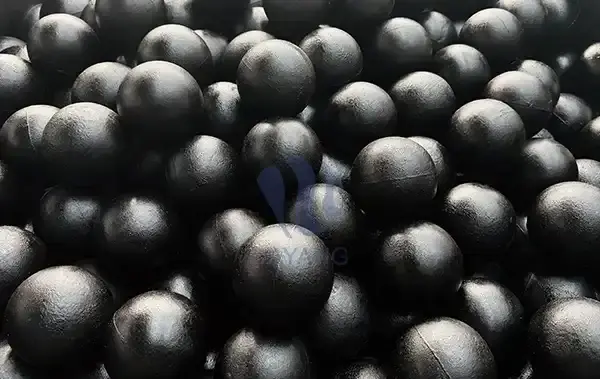Understanding the Role of Grinding Media in Industrial Processes
Grinding media are the workhorses of many industrial grinding operations. These spheres or cylinders, typically made of high-chrome steel or other wear-resistant materials, are used in ball mills and other grinding equipment to crush, grind, and pulverize materials. The efficiency of this process is crucial, as it directly affects the quality of the final product and the energy consumption of the operation.
The choice of the product isn't a one-size-fits-all decision. Different materials, sizes, and compositions of the product can dramatically alter the efficiency of your grinding process. High-quality grinding media can increase throughput, reduce energy consumption, and improve the consistency of your final product. On the flip side, subpar grinding media can lead to increased wear and tear on your equipment, more frequent replacements, and inconsistent product quality.
Crushing media assume a critical part in different modern cycles, especially in mining, concrete creation, and power age. They work with the crushing and crushing of materials, guaranteeing that particles arrive at the ideal size for ideal handling. The adequacy of crushing media straightforwardly impacts item quality, energy utilization, and functional proficiency. By exhaustively understanding their job, enterprises can more readily streamline processes, prompting upgraded efficiency and further developed asset the executives all through the assembling chain.
The Economic Impact of Optimal Grinding Media Selection
Picking the right crushing media has critical financial ramifications for organizations. Ideal choice can prompt diminished mileage on hardware, diminished energy utilization, and further developed throughput. This means lower functional expenses and expanded productivity. Besides, top notch crushing media upgrades item quality, which can order better market costs. As a result, putting money into the right product not only makes production more efficient but also gives you a leg up on the competition in the market, which helps you stay in business for the long run.
When it comes to production costs, the impact of the product extends far beyond their initial purchase price. The right grinding media can lead to substantial savings in several areas:
Energy Efficiency: High-quality grinding media can significantly reduce the energy required for grinding operations. This translates directly into lower electricity costs and a reduced carbon footprint for your operation.
Increased Throughput: Efficient grinding media can process more material in less time, increasing your plant's overall productivity without the need for additional equipment or labor.
Reduced Downtime: Durable, high-quality product require less frequent replacement, reducing the downtime associated with media changes and maintenance.
Improved Product Quality: Consistent grinding leads to a more uniform final product, potentially reducing waste and improving customer satisfaction.
Lower Wear on Equipment: Quality product can reduce wear on mill liners and other equipment, extending the life of your machinery and reducing maintenance costs.
Selecting the Right Grinding Media for Your Operation
Choosing the optimal grinding media for your specific application requires careful consideration of several factors:
Material Composition: The chromium content of the product can vary significantly, typically ranging from low (around 1%) to high (up to 30%). Higher chromium content generally results in increased hardness and wear resistance, but it's essential to balance this with the specific requirements of your grinding process.
Size and Shape: Grinding media come in various sizes and shapes, including balls and cylpebs. The optimal choice depends on your mill type, the material being ground, and the desired fineness of the end product.
Hardness and Toughness: These properties affect the wear rate of the media and its ability to withstand impact without breaking. The optimal balance between hardness and toughness depends on your specific grinding conditions.
Density: The density of the product affects its grinding efficiency and energy transfer. Higher density media generally provide more efficient grinding but may also increase wear on mill components.
By carefully considering these factors and working with experienced suppliers, you can select the product that optimizes your grinding process, maximizes efficiency, and minimizes production costs.
Choosing the right crushing media is pivotal for accomplishing ideal execution in any activity. Factors like material hardness, crushing climate, and wanted molecule size all impact the selection of media. Understanding these boundaries permits administrators to pursue informed choices that improve productivity and viability. Drawing in with providers who offer aptitude in crushing media can additionally guarantee that the chose items line up with explicit functional requirements, at last prompting further developed results and supported seriousness in the business.
The impact of grinding media on production costs is often underestimated. However, as we've explored, the right choice can lead to significant improvements in energy efficiency, throughput, product quality, and equipment longevity. These benefits compound over time, resulting in substantial cost savings and improved competitiveness.
Conclusion
For operations looking to optimize their grinding processes and reduce production costs, investing in high-quality product is a strategic decision that can yield impressive returns. By partnering with experienced manufacturers and leveraging the latest advancements in grinding media technology, industries can unlock new levels of efficiency and productivity.
If you're interested in exploring how high-quality grinding media can transform your operation and reduce your production costs, we invite you to reach out to our team of experts. With over three decades of experience in wear-resistant materials production, we're well-equipped to help you find the perfect grinding solution for your needs. Contact us at sunnyqin@nhgrindingmedia.com to learn more about our range of high-quality product and how they can benefit your operation.









